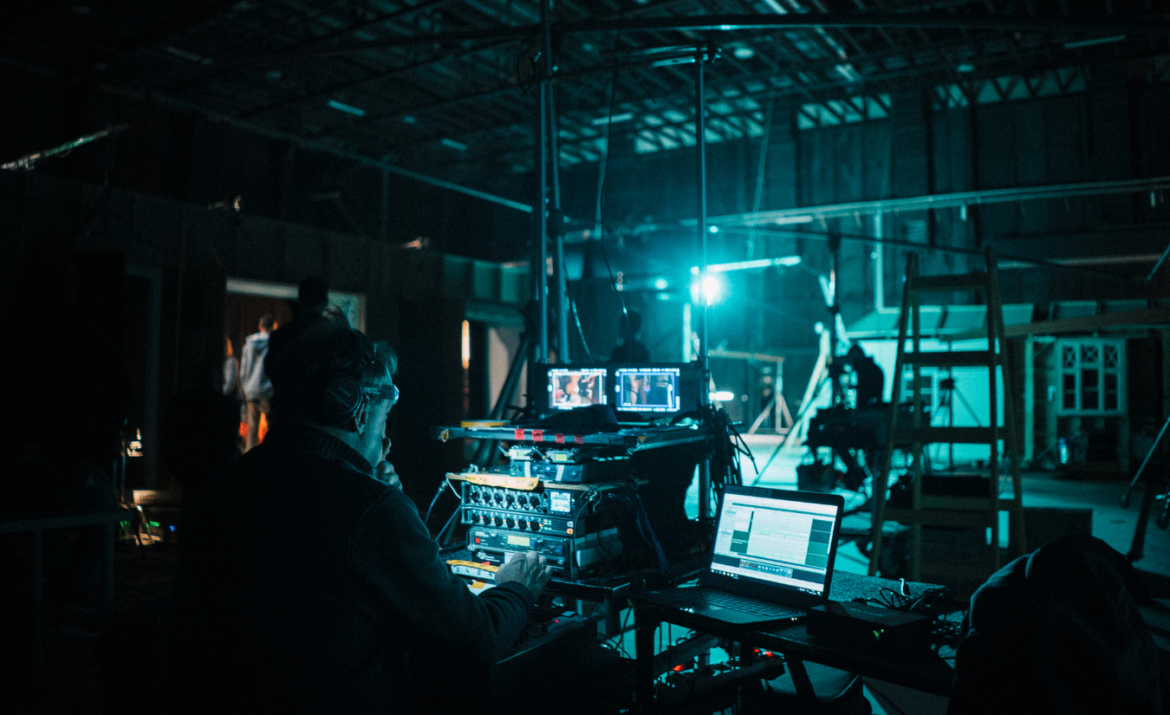
We delved into the world of cue sheet management and generation with Synchtank’s Product Manager, Paul s’Jacob to give you the breakdown.
What is a cue sheet?
As we know most television shows and films use music in some form throughout the production. The cue sheet is a list of all the music used in that production, along with the durations and how the music is used (whether as the main theme, background, featured, etc).
The cue sheet is a list of all the music used in that production, along with the durations and how the music is used
The cue sheet is then submitted to performing rights organisations (PROs) by the broadcaster or production company so they know which music is used in which productions.
When those productions are aired, the PROs know which rights holders to pay. Rights holders will also use them to assist with royalty tracking and processing, seeing where their music has been played and reporting back to their writers and artists.
How do different territories or societies handle cue sheet data, and does that impact how they’re created?
Most PROs have their own format, although many are shared or similar formats. There are small variations in which data is required to be included depending on the type of music used or the language variation of the production. In a global production, there may be a requirement to create and submit several cue sheets to handle the local variations.
What are some of the most common challenges or errors you see in cue sheet submissions?
The basic structure of a cue sheet is fairly simple, the tricky bit is getting the right data to fill it (as with everything music metadata related!).
The basic structure of a cue sheet is fairly simple, the tricky bit is getting the right data to fill it (as with everything music metadata related!).
The most challenging part is finding the correct and up-to-date writer, publisher and PRO information. Ideally, all that information would be submitted with IPI numbers and so on.
Unfortunately, it’s often quite hard for production companies to get this data, particularly where rights holders are split across multiple countries. If the data submitted to the PRO is different to the data held in the PROs database it requires querying, which can cause delays in royalty payments.
The production company has other data that is more under its control, such as the production type, timings and usage data, but if these are incorrect or there is confusion over multiple versions of a cue sheet, this can also cause problems for royalty payments.
Are there any standards or best practices when it comes to cue sheet management?
Most PROs will accept their own standard format. There are also some proprietary formats that some will accept.
The current global standard is CISAC AVR, with the Global Cue Sheet Standard 2.0 being developed by CISAC, the Society Publisher Forum and the IFPI. This new format will create greater consistency as well as bringing in more sound recording information.
But when it comes to best practices at Synchtank we advise our customers to ensure they keep up to date with ownership and rights data in their systems and being smart and mindful of their metadata – but more on how we manage cue sheets later in this article.
How early in a production should cue sheet planning begin?
Traditionally, cue sheets tend to come at the end of the production process. That makes sense as it’s when all the scenes have been finalized and music selected.
However, it does mean though that it sometimes gets treated as an afterthought, or another job that needs to get done after the production has finished.
Other parts of the music selection process need to happen during the pre-production and production stages, so there’s no reason the collection of data required for cue sheet planning can’t be integrated alongside the music auditioning, budgeting and clearance processes, with the final cue sheet being available with just a couple of clicks.
What role does metadata play in ensuring accurate cue sheet reporting?
Metadata is everything! A cue sheet is metadata. If the cue sheet doesn’t contain any metadata or contains the wrong metadata, at worst it won’t be accepted by the PRO, at best it will be accepted but there will be back and forth queries and delays in payments of royalties.
Metadata is everything! A cue sheet is metadata.
How do integrations with PROs or other third-party systems streamline the cue sheet process?
Again it’s all down to the metadata. The more information the person creating the cue sheet has available to them, the more accurate the cue sheet information will be. Having access to the correct data makes everyone’s lives easier.
How has technology helped ease the cue sheet process?
Cue sheets used to be handwritten or typed out on paper. Whilst they followed a style, there wasn’t really a standard format.
As spreadsheets and similar tools became available, cue sheets could be created using those formats, making changes and edits a lot simpler. It also started the path towards standardisation, as PROs could provide a standard template.
They’re still usually thought of as the last step in a process, so integrating their creation within the music supervision process makes that final step a lot simpler.
As cue sheets standards evolve, having the data in the correct structure and not just the final cue sheet makes recreating the cue sheets in new formats a lot easier.
As cue sheets standards evolve, having the data in the correct structure and not just the final cue sheet makes recreating the cue sheets in new formats a lot easier.
Can you share how Synchtank’s platform specifically supports or enhances cue sheet workflows?/ How does Synchtank differentiate itself from other platforms when it comes to cue sheet tools?
A cue sheet is the result of a lengthy process of selecting music, handling budgets, obtaining clearances and so on.
Synchtank’s platform makes creating a cue sheet an integral part of this whole process. It allows you to start with a production and its budget, then audition and select tracks that might be suitable for each scene or section of the production. Tracks can be kept or discarded, with usage types, budgets and clearances logged for each.
Synchtank’s platform makes creating a cue sheet an integral part of this whole process.
Once the final tracks have been selected, the cue sheet can be created immediately. All the required metadata comes from the sound recording and composition data, which is stored within the system and available for re-use within other productions.
For users who prefer to just create cue sheets from playlists or EDL files, that functionality is also available.
Future development will include clearance workflows and external rights data lookup features, making the whole process more fluid, comprehensive and accurate.
Lastly, what advice would you give to a production company just starting to implement cue sheet best practices?
Speak to your PRO to understand what their requirements are and keep an eye on developments made by the Society Publisher Forum with Cue Sheet standardisation.
Also get to know and understand the rights holders and why things are in a constant state of change with regards to the rights ownership.
Relationships with the licensing teams at labels and publishers will make your life a whole lot easier if you’re able to get accurate, up-to-date information from them quickly, which will lead to a quick turnaround in licensing.
Cue sheets may seem like just another administrative task in the production process, but they are vital to ensuring that music creators and rights holders receive accurate and timely royalty payments.
As the industry moves toward greater standardization, it’s more important than ever for production companies to adopt best practices in cue sheet management. By integrating cue sheet planning early in the production process and leveraging platforms like Synchtank, production teams can streamline workflows, minimize errors, and maximize royalty accuracy.
More about Synchtank’s Cue Sheets & Production Module
Through extensive development Synchtank has recently enhanced it’s Cue Sheets & Productions module, giving you the power to handle your end-to-end music supervision, clearance, budget and compliance all in one place!
In the Synchtank system you are able to:
- Effortlessly manage every aspect of your productions with our system, from detailed tracking for quick reference to seamless music supervision and cue sheet management.
- Empower your music supervisors to craft scenes and handpick the perfect tracks, all while keeping a close eye on clearances, timings, and budgets.
- Once your selections are finalized, effortlessly generate cue sheets ready to be dispatched to PROs and rights holders, guaranteeing compliance and a smooth royalty flow to creators and rights holders.
If you’re ready to enhance your cue sheet generation, save time on inputting and more time on the creative, then we’d love to speak to you! Reach out to us here
